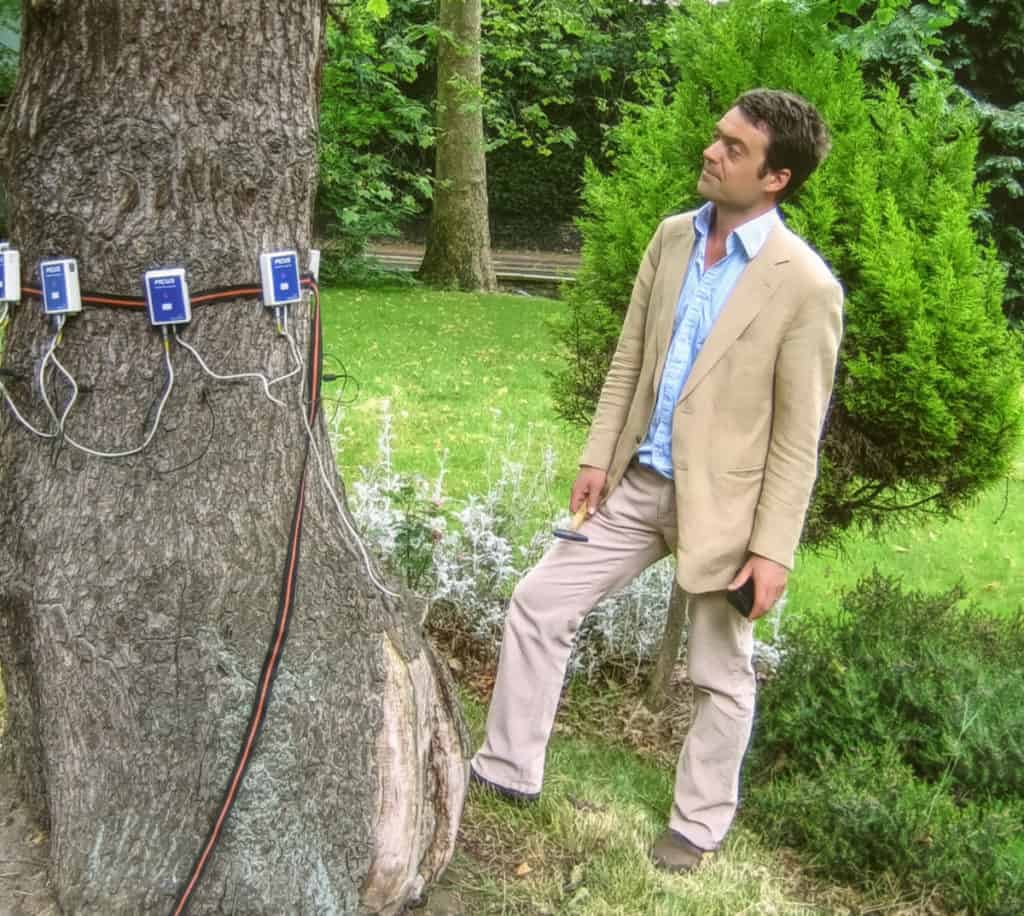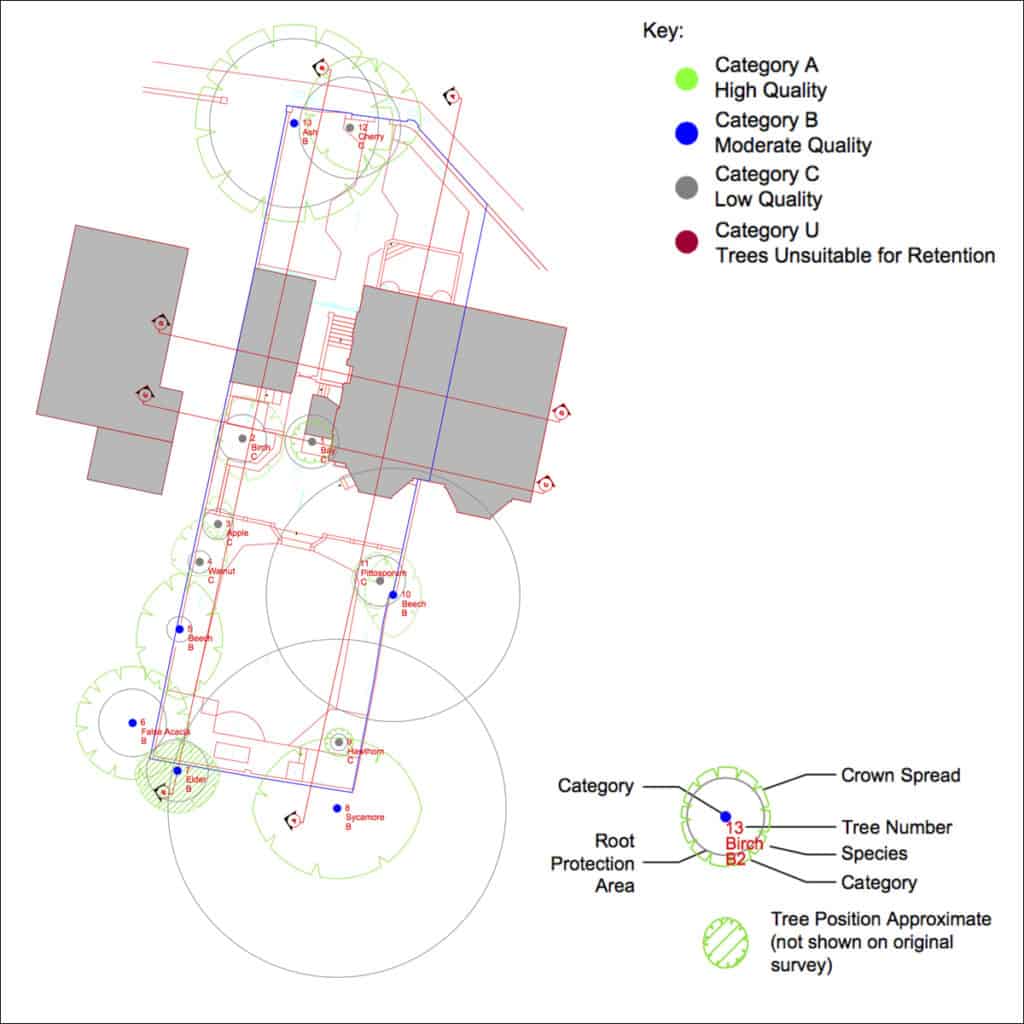BLOG
INTERESTING STUFF
THAT CAUGHT OUR EYE
Guest Expert: Can Trees Put a Stop to Your Development?
 Adam Hollis is an arboricultural consultant (or tree consultant, if that’s too much of a mouthful) with over 30 years of experience, including forest research. He’s currently Director at Landmark Trees and has been our trusted tree expert for more than ten years.
Adam Hollis is an arboricultural consultant (or tree consultant, if that’s too much of a mouthful) with over 30 years of experience, including forest research. He’s currently Director at Landmark Trees and has been our trusted tree expert for more than ten years.
Many parts of the planning process are a black and white exercise of satisfying the council’s requirements: the roof can’t be higher than X, the basement can’t be deeper than Y.
Trees are a far more subjective matter. Their aesthetic value, the amenity they provide, their contributions to the wider area can all change dramatically from person to person, often with deeply emotional or political implications for those involved.
It’s the job of arboricultural consultants such as myself to provide some scientific and intellectual basis to the decision-making process of how trees may constrain a site and how a scheme may in turn impact upon trees.
All trees are constraints, but some more so than others
Under the Town and Country Planning Act, local councils have a responsibility to protect trees in their boroughs, which can be statutorily protected with Tree Protection Orders (TPOs) or Conservation Area regulations.
Regardless of any such statutory protection, the constraints of trees on a site will be considered during the planning process, and if a Tree Officer deems the impacts unjustifiable, you won’t be granted permission.
The purpose of Tree Preservation Regulations isn’t to protect every last sycamore sapling that’s sprouted in your garden, but to protect trees that provide amenity to the site and the area that can’t be so readily replaced.
To determine which trees can be removed and which can’t, we assess their quality, their “useful life” and place them into various categories, each with their own recommendations for management.
During this assessment, we will also assess the health and structure of the trees, perhaps resorting to further diagnostic testing, such as microdrilling or sonic analysis of the trunk cross-section.
A young, healthy oak is more likely to survive encroachment from building works, than, say, a sick old fir tree, which may be unsuitable for retention in the long-run. Other times we may seek to preserve a characterful old beech tree.
Even if a tree is preserved, its health may have diminished so much since the original designation (which may have been over 50 years ago) that no order can preserve it still: trees are not buildings, but organisms: they live and die!
With the category of each tree determined, we mark the constraints on plan as overlapping circles of estimated root growth, canopy spread and shading, based on the dimensions taken in our survey. Each tree is colour-coded to its category, from High to Poor Quality.
Of course, if the constraint tree stands on a neighbour’s property, then our categorisation may be somewhat academic: an otherwise indifferent goat willow may take on a whole new value!
There is often a very delicate negotiation to be had on how such a tree’s impact (let alone removal) might be handled. In general, trees and boundaries are emotive subjects, and it is not the planners that have to be won over.
 Here’s an example of a Tree Constraints Plan from Aberdeen Terrace, with each tree colour coded for its quality and outlines for their crown spread and root protection area. You’ll notice the roots protection area of one moderate quality tree overlapping with the proposed development.
Here’s an example of a Tree Constraints Plan from Aberdeen Terrace, with each tree colour coded for its quality and outlines for their crown spread and root protection area. You’ll notice the roots protection area of one moderate quality tree overlapping with the proposed development.
Getting to the root of the problem
Trees are not just a constraint, they also complement a site and contribute to the character of a location.
The wrong way to approach a development is to go in with an inflexible idea of what you want then force it upon the site. All this will end with is a tree officer doing his job and shutting down your application, sometimes at the eleventh hour, even if you have the support of the rest of the planning department.
Instead, you should appreciate the value of the trees on the site and understand any protections that might be in place so that you can design around them rather than against them.
After all, there’s more to property value than raw square metres. Most people enjoy having trees around their property, and studies have found that a well maintained, leafy garden can increase property value by around 10%.
Regardless of your feelings towards trees, you need an arboricultural consultant with you as early as possible. Ideally, if you’re planning to develop a property, you’ll have us assess the site before you purchase it to confirm whether there are any trees that might obstruct your plans.
At the very least, we need to be involved during the design and planning phase. For more than ten years, I’ve worked closely with DGA to ensure their designs complement the trees on site and plan ways to mitigate any required tree removals – typically by planting replacements.
Once there is a rough blueprint of the development and any theoretical impacts have been identified, we can check them with trial pits along the boundary of the planned construction works to ascertain if any significant roots would be affected. We need to be especially careful with protected trees, as damaging their roots is a criminal offence.
Even if we do discover significant roots in these trial pits, through close collaboration with your architect, structural engineers, contractors and the Tree Officer, we can sometimes “unlock” sites which look impossible on paper.
For example, in Aberdeen Terrace (pictured above), we were able to build right up against a mature tree by carefully exposing significant roots, around which the structural engineer designed foundations and piling systems that avoided them – keeping the planning department, the client and the tree happy.
We remain involved with a project longer than most other professionals, often longer than the architect themselves. Where new trees and woods are planted, we may write management plans for three to five years (even 25 in exceptional cases) so that the trees remain healthy and become fully established.
Don’t be hasty – get in touch with us to learn more
If you have plans or a potential purchase in mind, don’t rush into it without first understanding the implications of any trees that are present on the site.
We’re always happy to offer advice and consultation at Landmark Trees, so if you have any questions please feel free to get in touch with us at info@landmarktrees.co.uk or 020 7851 4544.
Adam Hollis
